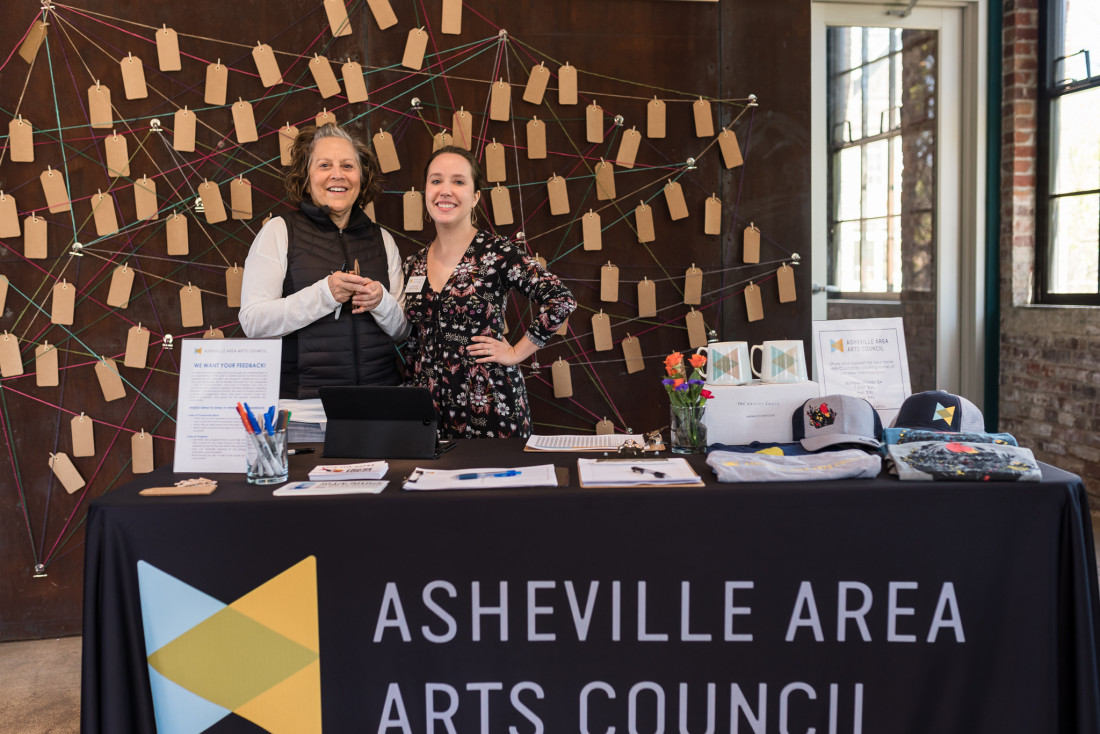To some extent, all nonprofits face the same problem: It’s hard to take a good picture of money. Donors respond to concrete images of impact in the world — tractor-trailers full of food, new shelters on the ground in disaster-hit areas, rescue animals happily rambling over a verdant sanctuary — with contributions, while screenshots of spreadsheets tend to have the opposite effect. Even the promise of posing with a giant novelty check can fall short when convincing people to give what many organizations need the most: unrestricted operating funds.
“Donors really like to know where their money is going, the hard numbers of specifically how they’re helping someone or something,” says Stefanie Gerber Darr, executive director of the Asheville Area Arts Council. “Paying staff or helping keep the lights on is just not as enticing.”
Nonprofits are often judged by their overhead ratio, the percentage of their total expenses made up by administrative and fundraising costs. By this logic, lower overhead translates to more money flowing directly into programming, which translates to better outcomes for people in need. For example, the California-based America’s Most Cost-Effective Charities touts that its member organizations spend 5 percent or less of received donations on overhead costs.
But as Jeanette Butterworth, a program consultant with the local nonprofit development group WNC Nonprofit Pathways, is quick to point out, organizations need funding to spend their funds well. “Just because we’re called nonprofits doesn’t mean that it doesn’t take money to provide the services that we do,” she says. To meet the challenge, nonprofits turn to creative combinations of strategies as they work to change the narrative around what many organizations call the “overhead myth.”
Strings attached
Grants from government agencies and private foundations are key funding sources for many nonprofits, including the Asheville-based Appalachian Sustainable Agriculture Project. About half of the local agriculture booster’s over $1 million in funding came from grant sources in 2016, supporting programs such as the Asheville City Market and local produce taste tests in area schools.
While grants are vital to ASAP’s funding mix, their stipulations usually favor specific programs at the expense of overhead flexibility. “There’s an assumption that a grant is some kind of free money, and it’s absolutely not. It’s really cheap work,” says Charlie Jackson, ASAP’s executive director. “[Funders] are paying for work that they would like to have done, but they’re getting it at cost.”
Jackson explains that most grants ASAP receives allot 10 percent of their money to overhead. However, the organization’s combined administrative and fundraising costs for 2016 represented roughly 17 percent of its expenses. “They’re structured in a such a way that they’re not covering the pieces you need to build capacity, train skills and maintain the work that you’re doing,” he says. “You have to raise other money just to pay for your grant work.”
Donations, sponsorships and program income make up the other half of ASAP’s budget. The organization can use these unrestricted funds in any way it deems necessary, such as propping up the underfunded overhead of its grant-supported programs.
“To do really effective grant work, I need high-quality, highly experienced staff,” Jackson says. “Money coming from these other sources lets me keep people like that so when I do get the grants, I’ve got the staff in place to do that good work.”
Double duty

In response to the difficulties of overhead fundraising, nonprofits have found ways for programs to further mission goals while simultaneously attracting much-needed income. Jackson gives the example of ASAP’s Local Food Guide: The publication is key to the group’s ethos of connecting local farmers with consumers, but it also yielded over $50,000 in listing fees and advertising in 2016.
Jackson also mentions the annual Business of Farming Conference, which offers sponsorships and collects admission fees. While this income doesn’t completely cover the overhead of the event, the conference’s very existence serves as a sort of marketing for ASAP’s work.
“It’s a visible way of letting the public know what we’re doing and achieving,” Jackson says. “If that spurs a donor to give us some money or a sponsor to come on board, then in a sense we’ve generated some overhead through increasing awareness.”
Gerber Darr notes that the AAAC’s recent Color Ball fulfilled a similar purpose. On a programmatic level, the event fostered creativity by providing a public platform for the region’s painters, sculptors, musicians, dancers and other artists. At the same time, the ball raised a sizable chunk of unrestricted funds and gave potential donors good associations with the nonprofit.
“We’re a really small staff, so throwing an event like that is a challenge,” Gerber Darr says. “But it brought awareness to a new group of people, re-engaged us with people who had been engaged in our early days and elevated us to that next level in the community.”
Other organizations combine fundraising and mission work even more directly. Asheville-based EcoForesters, a conservation nonprofit led by professional foresters, charges slightly above-cost fees for the bulk of its consultation services to private landowners. Then the group funnels the proceeds of that work into funding forestry research and education. “Unlike a for-profit business, it is our function as a mission-driven nonprofit to divert resources toward working in this strategic capacity and thereby have the greatest positive impact on the forest at a landscape scale,” EcoForesters shares on its website.
Myth busting
Creative strategies such as the Color Ball have raised the AAAC’s profile, but Gerber Darr says her organization’s overall success is largely tied to the day-to-day sharing of its efforts. “Telling our story and sharing the impact we have throughout the county has worked really well for us,” she explains. “We talk about how when you donate for general purposes, it still helps us run the programs and offer the services that we do.”
Since taking the helm of the AAAC two years ago, Gerber Darr has established more consistent communications with the nonprofit’s supporters. Daily social media posts on Facebook and Instagram give followers a better idea of its different programs, while a concise monthly newsletter summarizes key points. The group also staffs tables at community events such as The Big Crafty arts fair and National Tourism Week Summit to build face-to-face connections.
Butterworth emphasizes good donor communication as critical for organizations to explain their overhead needs. “It’s hard to tell that story in a letter that somebody gets once per year or a newsletter that they get a couple of times a year,” she says. “By building a relationship with individual donors, you help them understand how your nonprofit works, how your programs are run and what it takes to run them.”
As that conversation shifts, Butterworth hopes that nonprofits can adjust from a scarcity mentality to a more sustainable approach. Her work at WNC Nonprofit Pathways encourages organizations to invest in their people and infrastructure, not merely spend the minimum for program funding.
“Folks that graduate with an MBA can choose to work in the nonprofit world, or they can work in the for-profit world and make four times the amount of money,” Butterworth says. “That’s not a choice that many people can make. How can we raise the bar to a level where we aren’t losing talent?
“There’s a lot of talk right now about changing the narrative and looking at what it would really take to overcome hunger or homelessness,” Butterworth adds. “If that takes dollars, which it does, then that’s not a bad thing.”




Before you comment
The comments section is here to provide a platform for civil dialogue on the issues we face together as a local community. Xpress is committed to offering this platform for all voices, but when the tone of the discussion gets nasty or strays off topic, we believe many people choose not to participate. Xpress editors are determined to moderate comments to ensure a constructive interchange is maintained. All comments judged not to be in keeping with the spirit of civil discourse will be removed and repeat violators will be banned. See here for our terms of service. Thank you for being part of this effort to promote respectful discussion.